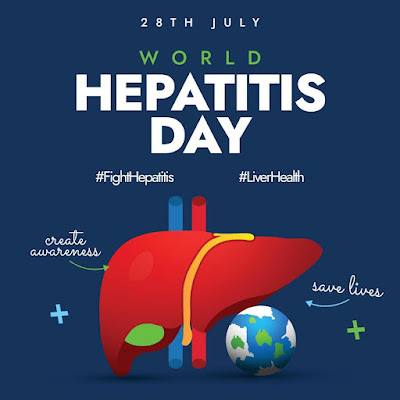Every 28 July, the world observes World Hepatitis Day, designated by the World Health Organization (WHO) to raise awareness of viral hepatitis, its prevention, diagnosis, and treatment, and to work towards eliminating hepatitis as a public health threat.
The date commemorates the birthday of Dr. Baruch Samuel Blumberg, who discovered the Hepatitis B virus and developed the first hepatitis B vaccine.
🩺 Why World Hepatitis Day Matters
✅ Global Health Crisis: Hepatitis causes over 1.1 million deaths annually, comparable to TB and HIV.
✅ Silent Epidemic: Many people live with hepatitis without knowing, risking severe liver disease and cancer.
✅ Preventable & Treatable: Vaccines (for hepatitis A and B) and effective treatments can prevent deaths.
✅ Elimination Goal: WHO aims to eliminate hepatitis by 2030 with global cooperation.
🌟 2025 Theme
The 2025 theme for World Hepatitis Day is:
“Hepatitis Can’t Wait: Test, Treat, Eliminate.”
This theme emphasizes urgency in testing, treating, and preventing hepatitis to save lives globally.
📊 Key Facts
✨ 296 million people live with chronic hepatitis B globally.
✨ 58 million people live with chronic hepatitis C globally.
✨ Over 80% of people with hepatitis lack prevention, testing, and treatment services.
✨ Hepatitis can lead to cirrhosis, liver failure, and liver cancer if untreated.
🎉 How to Observe World Hepatitis Day
✅ Get Tested: Encourage yourself and your community to undergo hepatitis testing.
✅ Spread Awareness: Share facts on social media using #WorldHepatitisDay.
✅ Attend Local Events: Participate in health camps or webinars on hepatitis prevention and treatment.
✅ Vaccinate: Ensure hepatitis A and B vaccinations for yourself and your family.
✅ Support Elimination Goals: Advocate for better healthcare policies and hepatitis services in your community.
💡 Why It Matters for Communities
✅ Early detection can prevent liver damage and reduce transmission.
✅ Vaccination and safe practices protect future generations.
✅ Collective action can help countries meet the 2030 elimination targets.
“Hepatitis can’t wait. Our actions today can save lives tomorrow.”
🌿 Artistic & Educational Opportunities
For artists, educators, and storytellers:
🎨 Create infographics and visual stories simplifying hepatitis facts for your audience.
📸 Document community health activities or vaccination stories.
🖋️ Write reflective blog posts on how health and prevention are keys to building resilient communities.
📌 Final Thought
On 28 July, let World Hepatitis Day remind us that with awareness, prevention, and treatment, hepatitis can be eliminated, and countless lives can be saved.
🏠 For more art, travel, and cultural stories, visit our CRA ARTS Main Page.

Comments
Post a Comment